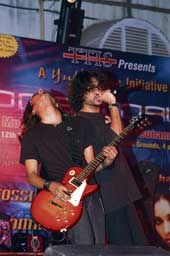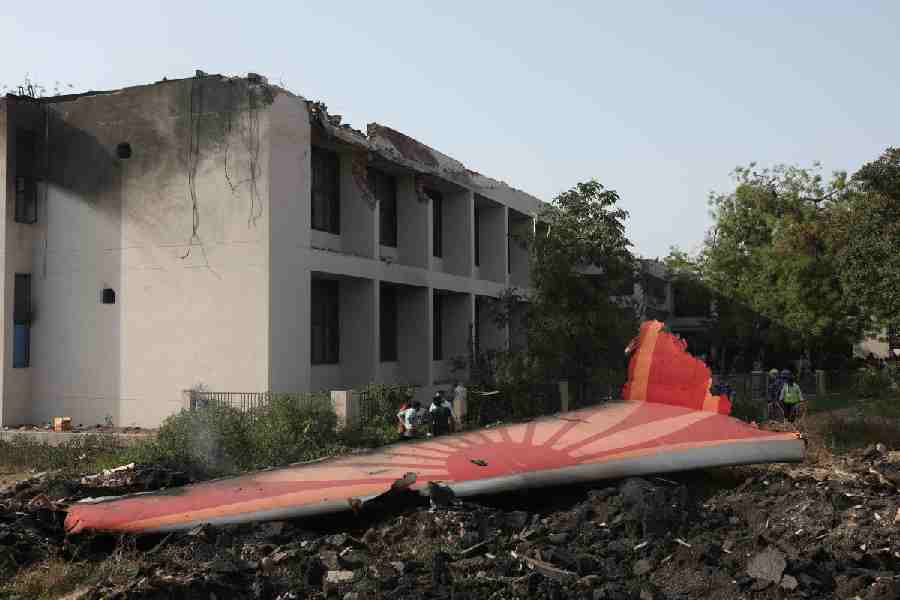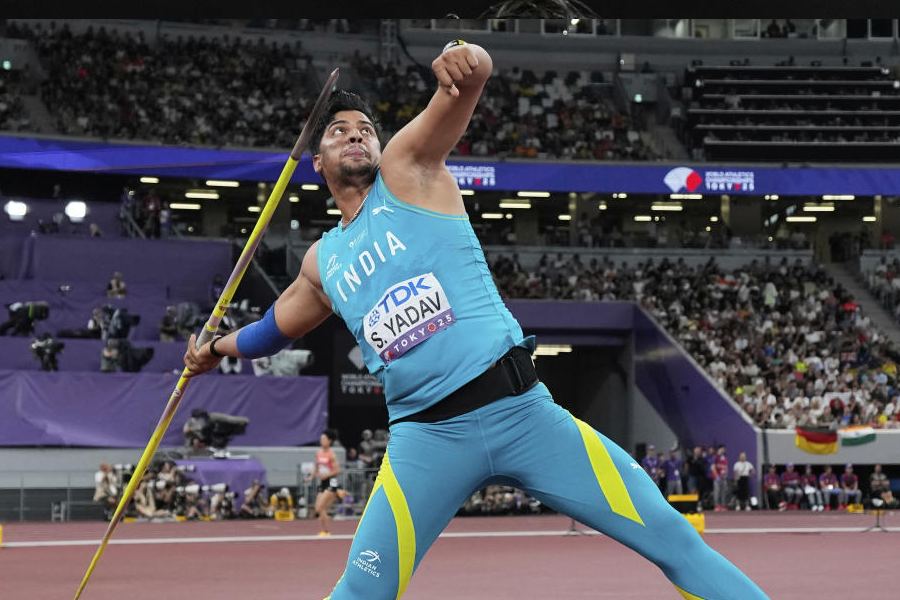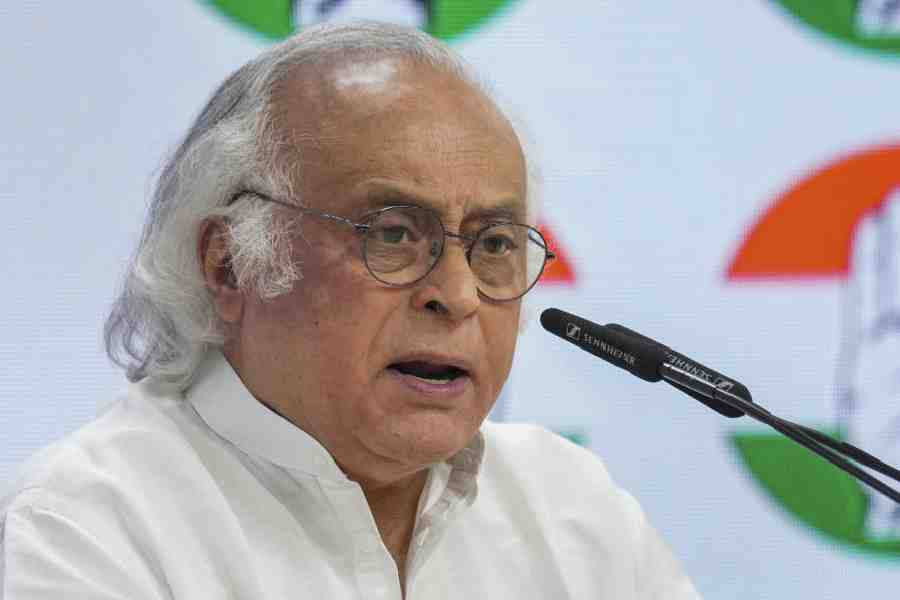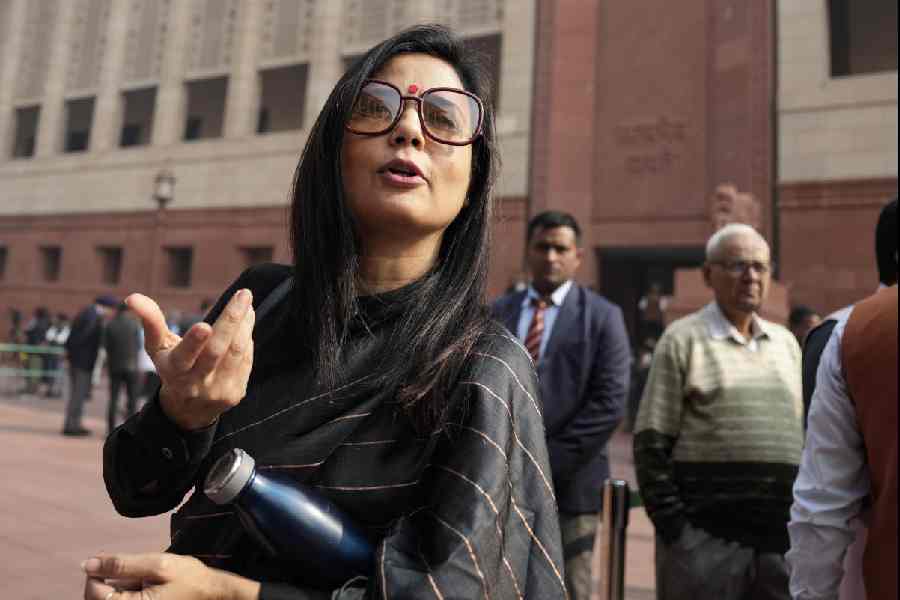 |
| Fossils |
The sound of their music is going places, with a new look and feel
Cactus is touring the US. Bhoomi performed at the UN headquarters on July 12. The Krosswindz song Tangra tobu katon jaye has been nominated for Best Indian Classical/Traditional Song Nominee Writer at the Just Plain Folks, a music awards in the US parallel to the Grammy, this November. Chandrabindoo toured the US as official style partners of jeans major Levi’s last year.
This year at Band-e-Mataram, the Bangla band contest organised by Sangeet Bangla, there were 130 participants. All except one were from outside Calcutta. The finalists were bands from Siliguri, Madhyamgram, Chandernagore and Asansol. The Chandernagore band, Missing Link, won. Drummer Rudraneel said they play to packed audiences in Behrampore, Asansol, Shantipur… Chandrabindoo enjoys celebrity status in Sonarpur, Habra and Durgapur. Greenox from Siliguri had been one of the finalists at Kalyani Black Label Bangla Rock-War of the Rock Stars 2006. While the bassist of the band MO2, which participated at the contest, is a lecturer of economics from Siliguri, the drummer of another band at the event was the son of an auto-driver.
Small town rocks
From a sub-culture that sprang up in the mid-Nineties, after its first aborted spurt in the Seventies, Bangla bands have now leapt up and broken all barricades and jumped into the mosh-pit of mainstream.
Says Upal of Chandrabindoo: “When we play outside Calcutta, the audience requests for less-known songs like Bus stop e keu nei. They even react if we make a mistake with the lyrics.” An unofficial estimate puts the number of Bangla bands at 500-plus — and this is only this side of the Padma.
 |
| Chandrabindoo |
Trademark tunes
“It is a good time for Bangla rock,” feels Tuki of Krosswindz. “As a judge in the Band-e-Mataram contest I was amazed at the quality of the new bands. Excellent guitar techniques, good lyrics and good vocals…,” says Tuki.
One sign Bangla bands have arrived is that the lead musicians are known by endearing monikers. Tuki is also Vikramjit Banerjee, as Sidhu of Cactus is Siddhartha and Gabu of Lakkhichhara is Gourab Chatterjee. Yet another sign is that they have developed signatures. The bands have their own acts with their on-stage antics and the music they play. With their black attire, shades and headbands, Fossils has iconised the “rebel” look. At a Fossils concert, Rupam will swing his mike in a certain way. Jimi Hendrix used to pluck the guitar with his teeth. Tuki, his devotee, uses his mikestand as a slide for his guitar. Cactus wears kurtas with namaboli prints, while white kurtas, blue jeans and red dupattas are the Bhoomi trademarks.
As Devadyouti Das of South Point High School says: “We identify with Fossils. There is the machismo, the concern with youth, the rebellion against authority.”
 |
| Lakkhichhara |
On record
For an aspiring band, cutting an album — which costs around Rs 80,000 — is a sign that it has arrived. More recording studios are eager to work with new names. Asha Audio, working with Bangla bands since 1995, has Mohiner Ghoraguli, Parash Pathar and Lakkhichhara. But even bands like Missing Link from Chandernagore and Band-e-Mataram runner-up Srot from Madhyamgram have recording deals with the company. Says Mohua Lahiri, director of Asha Audio: “This year we are launching Abbulish, Madol and Kalpurush.” While the number of copies for an established act can go up to 10,000, for a new line-up, Asha Audio will launch about 1,500-2,000 copies, says Lahiri.
Aspiring Bangla bands are getting a number of platforms at various contests, where the award ranges from a plaque to recording deals with labels. Princeton Club on Prince Anwar Shah Road, which hosts upcoming bands every Friday, has on its roster Rudraa, which has come out with an album in Bengali titled Neel Swapno..Lal Galpo. There are websites like www.rsjonline.com for upcoming bands.
 |
Change chime
More sophisticated instruments like Ibanez, Fender as well as Mapex and Tama drum kits are available in Calcutta now. The language, too, has changed. Once Cactus sang: “Sa sa sa Saridon, Gelusil/Buke boro koshto/Chepe rakha sex e charitro noshto”. Their lyrics spoke of the ordinariness of everyman, about daily battles won and lost. But mellow love ballads on the chhaposha Bengali’s travails in resigned self-mockery are passe now. Today’s GeNext vents its angst in your face. They talk about self disgust in “Attomoithuner ghrinno shohore/phirtey chai na/tobu phiri bar bar” (from Acid by Fossils).
At the same time, the bands have also widened their audience base. The greatest draw remains the college crowd, but band-er gaan, especially from Bhoomi and Chandrabindoo, has found popularity with all ages. “Now only 25 per cent of our shows are in colleges. About 40 per cent are for corporate houses and offices. The rest are one-off shows at clubs and special occasions,” says Soumitra Roy of Bhoomi.
Yesterday, today...
Then, the most important part: money. “Ma dekha deye, noye taka deye,” Kalpurush sang a few years ago. Money sure has come the way of the Bangla band. As a profession, it is more economically viable than before. Says Subhajit Roy Chowdhury of Rudraa: “We get about 10 to 12 shows a month.” Charges for a show vary from Rs 20,000 for upcoming bands to almost a lakh for established acts, with rates increasing during the festival season and varying according to the venue. When Chandrabindoo started out, all the members had been pursuing other professions. Now Upal freelances as a graphics designer while Dron still works with Power FM. As Upal remarks: “If you want to earn as much as the chairman of ITC, you will be disappointed. But if you are satisfied with a middle class lifestyle, then the band does fine.”
This comfort level was a far cry in the beginning. Gautam Chattopadhyay and his band Mohiner Ghoraguli, said to be the first Bangla band in this Bengal, came up with Shongbighno Pakkhikul O Kolkata Bishayak in 1977 and was branded “experimental” and “weird”. The bhadrolok was not ready for the application of guitars and drums to Bangla gaan.
Almost two decades later, Kabir Suman, Anjan Dutt and Nachiketa started singing Jibonmukhi, making guitar and Bangla bhasha go together. About the same time as these solo acts, Bangla bands arrived. But if for Suman or Dutt Dylan was the driving force, for the new bands, it was Led Zeppelin and Pink Floyd. In 1993, Cactus held its first performance at CLT in Calcutta. But the defining movement of the new wave was Abar Bochhor Kuri Bade in 1995 by Mohiner Ghoraguli. “The instant success of the album probably paved the way for other rock bands,” says Tuki. The show had begun.
 |
... Tomorrow
How long will it go on? There is scepticism, as band members go as fast as they come.
Says singer Shilajit: “While the opportunity is greater, there is increased competition...”
Though the market is improving, most bands have to cough up 50 per cent of the charges of recording an album, says a member.
And yet, the show goes on. Orpheus, a south Calcutta band of college students, is soundproofing its “rehearsal pad” — the mezzanine floor in the house of one of the members — with egg-crates. To cover the ceiling with the crates, they stand on stools, so that they can hold the crates against the ceiling till the adhesive dries.
“Amra gaibo shudhu gaan... Hotey chai na shironaam...”

